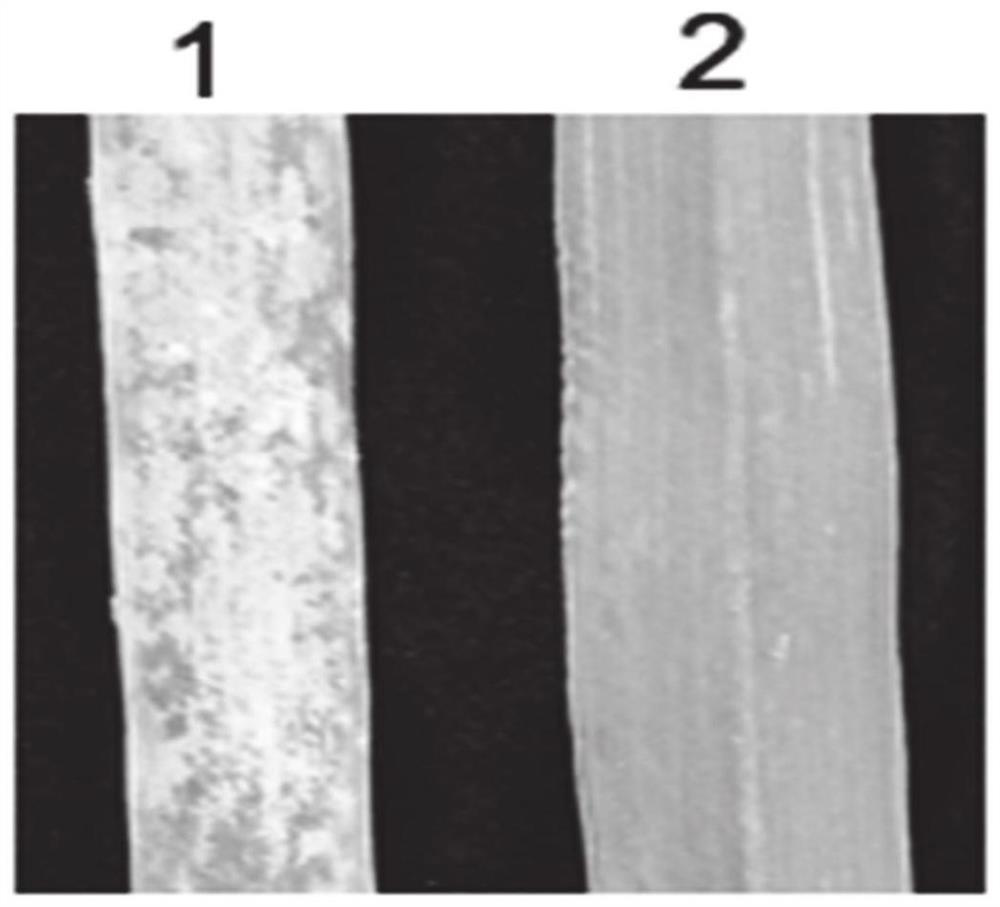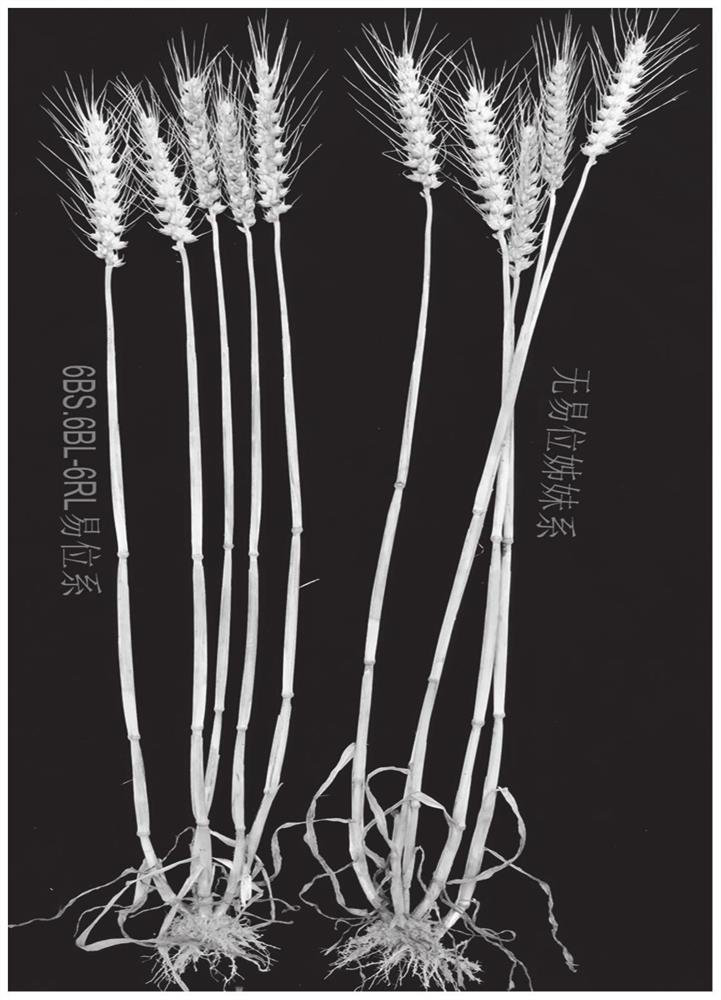Creation method and application of powdery mildew resistant novel wheat-rye 6BL-6RL small fragment translocation line
A 6BS.6BL-6RL, powdery mildew resistance technology, applied in the fields of molecular biology and cell biology, can solve problems such as linkage burden, genetic imbalance, etc., to increase the 1000-grain weight of seeds, enrich the genetic basis, and improve wheat yield traits. Effect
- Summary
- Abstract
- Description
- Claims
- Application Information
AI Technical Summary
Problems solved by technology
Method used
Image
Examples
Embodiment 1
[0032] Example 1 Creation of a novel wheat-rye 6BS.6BL-6RL small fragment translocation line resistant to powdery mildew
[0033] 1. Hybridization of wheat and rye to obtain octoploid triticale
[0034]The wheat cultivar Mianyang 11, which is highly susceptible to powdery mildew, was used as the female parent, and the diploid rye Kustro resistant to powdery mildew was used as the male parent. When crossing, the female parent Mianyang 11 needs to be emasculated in advance, and the selection of emasculation period and pollination period is the key factor for fruiting. The emasculation period is: the ear neck of the wheat ear exposes 1-2cm of the sword leaf sheath, and the pistil stigma is not fully opened. Pollination period: Pollination on the day of emasculation, and another pollination on the next day, so that a large number of F1 seeds can be obtained. After the obtained F1 seeds germinate and take root, cut off the root tip and use ND-FISH technology to identify whether i...
Embodiment 2
[0043] Example 2 Investigation of the Important Agronomic Traits of the Homozygous Wheat-Rye 6BS.6BL-6RL Small Fragment Translocation Line
[0044] The homozygous wheat rye 6BS.6BL-6RL small segment translocation line and its non-translocation sister line were planted under the same conditions, and their powdery mildew resistance and important agronomic traits, including plant height, tiller number, ear formation The number, spike length, number of spikelets per spike, seed setting rate, grain length and thousand-grain weight and other important agronomic traits were recorded, and the agronomic traits of homozygous translocation lines and non-translocation sister lines were statistically analyzed.
[0045] Such as figure 1 As shown, compared with the non-translocation sister line, the homozygous wheat rye 6BS.6BL-6RL small fragment translocation line was immune to powdery mildew, while the non-translocation sister line was highly susceptible to powdery mildew. Such as figur...
Embodiment 3
[0046] Example 3 Determination of the 6BL translocation breakpoint in the 6BS.6BL-6RL small fragment translocation chromosome, and the genes contained in the deletion 6BL and translocation 6RL segments
[0047] The homozygous 6BS.6BL-6RL small fragment translocation line was resequenced, and then the published wheat genome sequence (Wheat_IWGSC_WGA_v1.0) (http: / / www.wheatgenome.org) and rye genome sequence (Secale_cereale_Lo7_v2) ( https: / / wheat.pw.usda.gov / cgi-bin / seqserve / blast_rye.cgi) were combined, and then using bioinformatics methods, the resequencing results were compared with the combined genome sequences of wheat and rye to obtain Determine the 6BL break site in the 6BS.6BL-6RL small fragment translocation chromosome, and then use bioinformatics methods to analyze the genes carried by the missing 6BL segment and the 6RL segment involved in the translocation.
[0048] The oligonucleotide probes Oligo-pSc119.2-1, Oligo-Ku, Oligo-pSc200 and Oligo-pSc250 were used to det...
PUM
 Login to View More
Login to View More Abstract
Description
Claims
Application Information
 Login to View More
Login to View More - R&D Engineer
- R&D Manager
- IP Professional
- Industry Leading Data Capabilities
- Powerful AI technology
- Patent DNA Extraction
Browse by: Latest US Patents, China's latest patents, Technical Efficacy Thesaurus, Application Domain, Technology Topic, Popular Technical Reports.
© 2024 PatSnap. All rights reserved.Legal|Privacy policy|Modern Slavery Act Transparency Statement|Sitemap|About US| Contact US: help@patsnap.com










